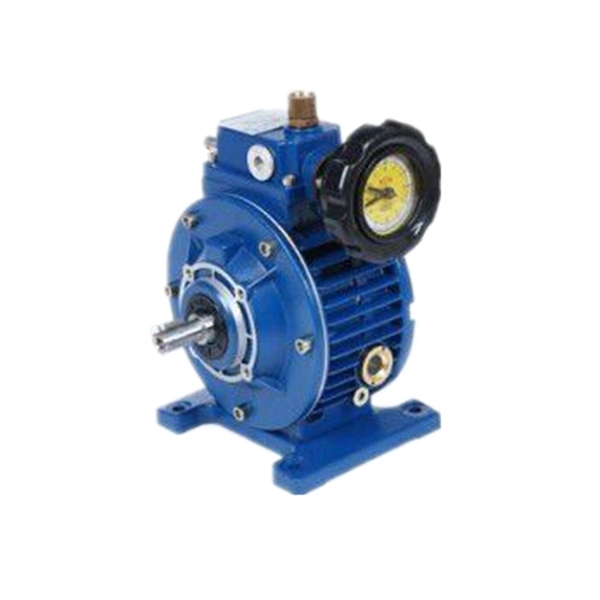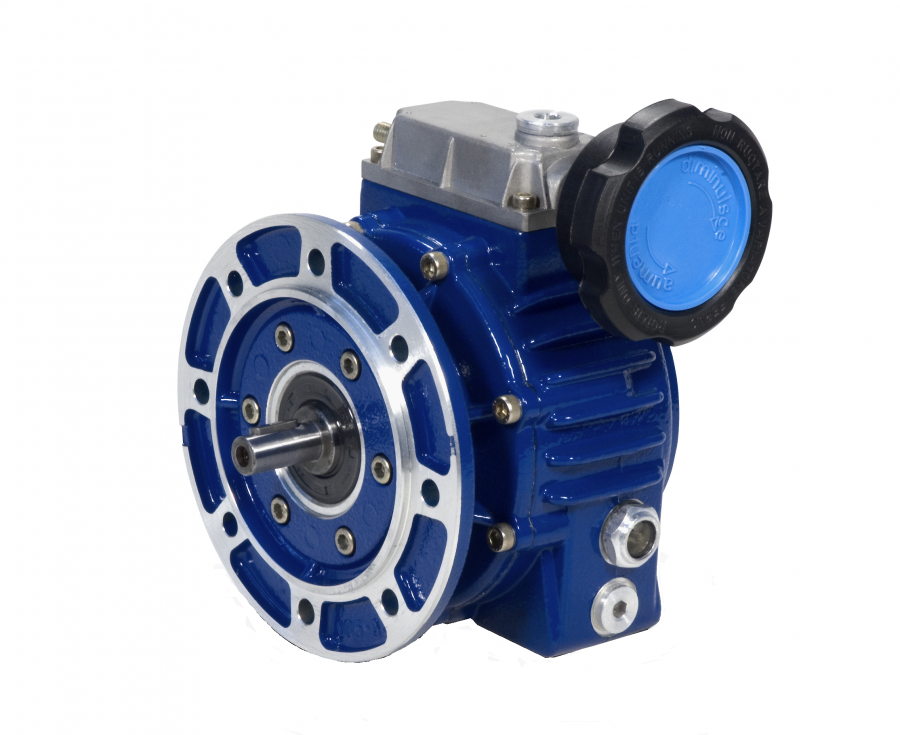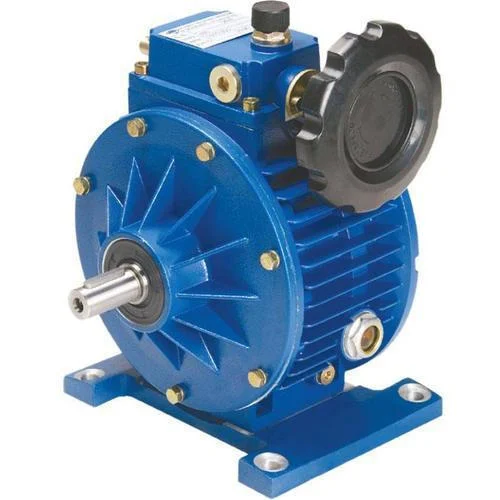Product Description
Product Description
Gear Ratio 20:1 Long-life gearbox speed variator for 3500W servomotor for plasma cutting machine is a new generation of practical products independently developed by our company:
Low noise: less than 65db.
Low back clearance: up to 3 arc minutes in a CHINAMFG and 5 arc minutes in a double stage.
High torque: higher than the standard planetary reducer torque.
High stability: high strength alloy steel, the whole gear after hardening treatment, not only the surface hard substitution.
High deceleration ratio: Modular design, planetary gearbox can be interlinked.
Gear Ratio 20:1 Long-life gearbox speed variator for 3500W servomotor characteristic:
1.Planetary reducer manufacturer-Fubao Electromechanical Technology adopts an integrated planetary carrier and output shaft, which can provide better torsional rigidity. After precision machining, the gear set is not easy to eccentric, which can reduce interference, reduce wear and noise, and at the same time use a large The bearings are arranged with a wide span to distribute the load of the bearings, and once again strengthen the torque rigidity and radial load capacity of the gearbox. The output cover is made of aluminum alloy, which provides better heat dissipation capability for the product, so that the reducer produced by Fubao Electromechanical Technology can play an excellent role in the field of mechanical tools.
2.The planetary gear set is specially made of alloy steel. First, it undergoes quenching and tempering heat treatment to make the material hardness reach HRC30 degrees, and then undergoes nitriding surface treatment to HV860, so that the product has the characteristics of high surface hardness and high toughness in the center, and achieves the best product strength and service life. optimization.
3.The input shaft and the motor output shaft are connected by a bolted structure, with a round shaft seal design, and through dynamic balance analysis, it can ensure that there is no eccentric load at high speeds. After reducing unnecessary radial force, it can effectively Reduce the load on the motor side.
4.The material of the input cover/motor connection seat is made of aluminum alloy, which can provide better heat dissipation effect, and then provide good concentricity and verticality through professional lathe processing, so that the product can be stably combined with various motors, reducing the damage caused by insufficient precision. Unnecessary axial radial force makes the product have a longer life cycle.
| WPG/WPGL series parameters | Model number | WPG/WPGL60 | WPG/WPGL80 | WPG/WPGL90 | WPG/WPGL120 | WPG/WPGL160 |
| Rated output torque | 15~39Nm | 50~100Nm | 50~100Nm | 110~230Nm | 160~600Nm | |
| Reduction ratio | L1: 4, 5, 7, 10 L2: 12, 15, 20, 25, 30, 35, 40, 50, 70, 100 | |||||
| Planetary gear backlash | L1: ≤10 L2: ≤12 | |||||
Detailed Photos
Product Details
Other products
Product Advantage
Compared with other reduction machines, planetary gear reduction machines have high rigidity, high precision (single stage can be achieved within 1 point), high transmission efficiency (single stage in 97-98%), high torque/volume ratio, lifetime maintenance free and other characteristics.
Because of these characteristics, planetary gear reducer is mostly installed on the stepper motor and servo motor, used to reduce speed, increase torque, matching inertia.
Company Profile
Factory Display
Q: Speed reducer grease replacement time
A: When sealing appropriate amount of grease and running reducer, the standard replacement time is 20000 hours according to the aging condition of the grease. In addition, when the grease is stained or used in the surrounding temperature condition (above 40ºC), please check the aging and fouling of the grease, and specify the replacement time.
Q: Delivery time
A: Fubao has 2000+ production base, daily output of 1000+ units, standard models within 7 days of delivery.
Q: Reducer selection
A: Fubao provides professional product selection guidance, with higher product matching degree, higher cost performance and higher utilization rate.
Q: Application range of reducer
A: Fubao has a professional research and development team, complete category design, can match any stepping motor, servo motor, more accurate matching.
| Application: | Motor, Machinery, Agricultural Machinery, Mechanical Equipment |
|---|---|
| Hardness: | Hardened Tooth Surface |
| Installation: | Vertical Type |
| Customization: |
Available
| Customized Request |
|---|
.shipping-cost-tm .tm-status-off{background: none;padding:0;color: #1470cc}
|
Shipping Cost:
Estimated freight per unit. |
about shipping cost and estimated delivery time. |
|---|
| Payment Method: |
|
|---|---|
|
Initial Payment Full Payment |
| Currency: | US$ |
|---|
| Return&refunds: | You can apply for a refund up to 30 days after receipt of the products. |
|---|

What maintenance practices are crucial for prolonging the lifespan of variator gearboxes?
Proper maintenance practices are essential for prolonging the lifespan of variator gearboxes and ensuring their optimal performance. By following these crucial maintenance practices, you can maximize the longevity of variator gearboxes:
- Regular Inspections: Conduct regular inspections of the variator gearbox to identify any signs of wear, damage, or abnormal conditions. Inspect the gearbox for leaks, unusual noises, vibrations, and any visible signs of damage or misalignment. Regular inspections help in detecting potential issues early on, allowing for timely maintenance and preventing further damage.
- Proper Lubrication: Ensure proper lubrication of the variator gearbox components. Lubricants reduce friction, wear, and heat generation, thereby extending the lifespan of the gearbox. Follow the manufacturer’s recommendations for lubricant type, quantity, and change intervals. Regularly check the lubricant levels and top-up or replace the lubricant as needed. Proper lubrication is crucial for smooth operation and preventing premature failures.
- Cleaning: Keep the variator gearbox clean and free from dirt, dust, and debris. Regularly clean the exterior of the gearbox using appropriate cleaning methods and materials. Avoid introducing contaminants into the gearbox during cleaning or maintenance procedures. Cleanliness helps in preventing abrasive particles from entering the gearbox and causing damage to the internal components.
- Torque and Tension Checks: Periodically check the torque and tension of fasteners, belts, or chains associated with the variator gearbox. Ensure that they are properly tightened and tensioned according to the manufacturer’s specifications. Loose fasteners or improper belt/chain tension can lead to excessive vibrations, misalignment, and premature wear of gearbox components.
- Alignment: Verify the alignment of the variator gearbox with the connected equipment or shafts. Misalignment can cause increased stress on the gearbox components, leading to accelerated wear and reduced lifespan. Use appropriate alignment tools and techniques to ensure proper alignment, minimizing excessive loads and improving the longevity of the gearbox.
- Temperature Monitoring: Monitor the temperature of the variator gearbox during operation. Excessive heat can indicate issues such as inadequate lubrication, overloading, or improper ventilation. Regularly check the temperature using temperature sensors or thermal imaging techniques. Address any temperature abnormalities promptly to prevent potential damage to the gearbox.
- Condition Monitoring: Implement condition monitoring techniques to assess the health of the variator gearbox. This can include vibration analysis, oil analysis, or other predictive maintenance methods. By monitoring key parameters, such as vibration levels or oil characteristics, potential issues can be detected early, and appropriate maintenance actions can be taken to prevent major failures.
- Training and Documentation: Ensure that maintenance personnel receive proper training on variator gearbox maintenance practices. Familiarize them with the specific procedures, safety guidelines, and recommended maintenance intervals provided by the gearbox manufacturer. Maintain detailed documentation of maintenance activities, including inspections, lubricant changes, repairs, and any abnormalities observed. This documentation helps in tracking maintenance history and identifying recurring issues.
- Manufacturer Guidelines: Always follow the maintenance guidelines provided by the variator gearbox manufacturer. These guidelines may include specific maintenance intervals, recommended spare parts, and detailed instructions for various maintenance tasks. Adhering to the manufacturer’s guidelines ensures that maintenance practices align with the gearbox’s design and specifications.
By implementing these crucial maintenance practices, you can significantly prolong the lifespan of variator gearboxes, minimize downtime, and optimize their performance throughout their operational life.

Can you provide real-world examples of products that use variator gearbox technology?
Variator gearbox technology is utilized in a wide range of products across various industries. Here are some real-world examples of products that incorporate variator gearboxes:
- Automotive Transmissions: Many modern automobiles use variator gearboxes, commonly known as continuously variable transmissions (CVTs). CVTs offer smooth and seamless gear ratio changes, allowing the engine to operate at the most efficient speed for improved fuel economy. They are found in vehicles from various manufacturers, including Nissan, Honda, Toyota, and Subaru.
- Industrial Machinery: Variator gearboxes are used in various industrial machinery applications. For example, in conveyor systems, variator gearboxes provide variable speed control to match the production requirements and optimize energy consumption. They are also employed in machine tools, printing presses, packaging equipment, and textile machinery.
- Fitness Equipment: Many fitness machines, such as treadmills, elliptical trainers, and stationary bikes, incorporate variator gearboxes. These gearboxes allow users to adjust the resistance level or simulate different terrains by changing the gear ratio. Users can customize the intensity of their workouts while the equipment operates efficiently.
- Agricultural Machinery: Variator gearboxes are used in agricultural equipment to provide adjustable speed control. Examples include combine harvesters, seeders, sprayers, and irrigation systems. The ability to vary the speed allows farmers to optimize machine performance based on specific field conditions and crop requirements.
- Construction Equipment: Construction machinery often utilizes variator gearboxes to provide variable speed and torque control. Equipment such as excavators, loaders, and cranes benefit from the flexibility offered by variator gearboxes, allowing operators to adapt to different tasks and work conditions efficiently.
- Power Tools: Variator gearboxes are employed in power tools like drills, sanders, and grinders. These gearboxes enable users to adjust the rotational speed to match the material being worked on, optimizing performance and minimizing power consumption.
- Elevators and Lifts: Variator gearboxes are utilized in elevator and lift systems to provide smooth and controlled vertical movement. The gearboxes allow for variable speed operation, ensuring passenger comfort and energy-efficient operation.
These examples represent just a few applications where variator gearboxes are commonly used. The versatility and benefits of variator gearboxes make them a popular choice in industries that require variable speed control, energy efficiency, and optimized power transmission.

What is a variator gearbox and how does it work in mechanical systems?
A variator gearbox, also known as a variable speed transmission, is a type of gearbox that allows for continuous and stepless variation of the output speed within a certain range. It is commonly used in mechanical systems where the output speed needs to be adjusted dynamically without fixed gear ratios. The variator gearbox achieves this by employing specific mechanisms such as belts, chains, or cones.
One common type of variator gearbox is the belt-and-pulley system. It consists of two variable-diameter pulleys connected by a belt. These pulleys can change their effective diameter by adjusting their position. The input pulley is connected to the power source, such as an engine or motor, while the output pulley is connected to the load. By varying the diameters of the pulleys, the speed ratio between the input and output can be continuously adjusted, allowing for a wide range of output speeds.
The variator gearbox works based on the principle of changing the effective radius of the pulleys. When the input pulley diameter increases or the output pulley diameter decreases, the belt is forced to ride higher on the pulley, resulting in a larger effective radius. This causes the output speed to decrease relative to the input speed. Conversely, when the input pulley diameter decreases or the output pulley diameter increases, the belt rides lower on the pulley, leading to a smaller effective radius and an increase in the output speed.
The variator gearbox can be controlled manually or automatically, depending on the application. In manual systems, the adjustment of the pulley diameters is done by the operator using mechanical or hydraulic mechanisms. In automatic systems, the adjustment is typically controlled by a computer or an electronic control unit (ECU) based on various parameters such as speed, load, or user inputs.
One of the key advantages of variator gearboxes is the ability to achieve smooth and stepless speed variation. Unlike traditional gearboxes with fixed gear ratios, variator gearboxes offer infinite possibilities for adjusting the output speed. This flexibility is particularly beneficial in applications where precise control of speed is required, such as in vehicles, industrial machinery, and power transmission systems.
However, it’s important to note that variator gearboxes may have limitations in terms of torque capacity and efficiency compared to traditional fixed-ratio gearboxes. The power transmission efficiency of variator gearboxes can vary depending on the specific design and operating conditions.
In summary, a variator gearbox is a type of gearbox that allows for continuous and stepless variation of the output speed. It uses mechanisms such as belts, chains, or cones to adjust the effective diameter of the pulleys, enabling dynamic speed control in mechanical systems.


editor by CX 2023-11-14
